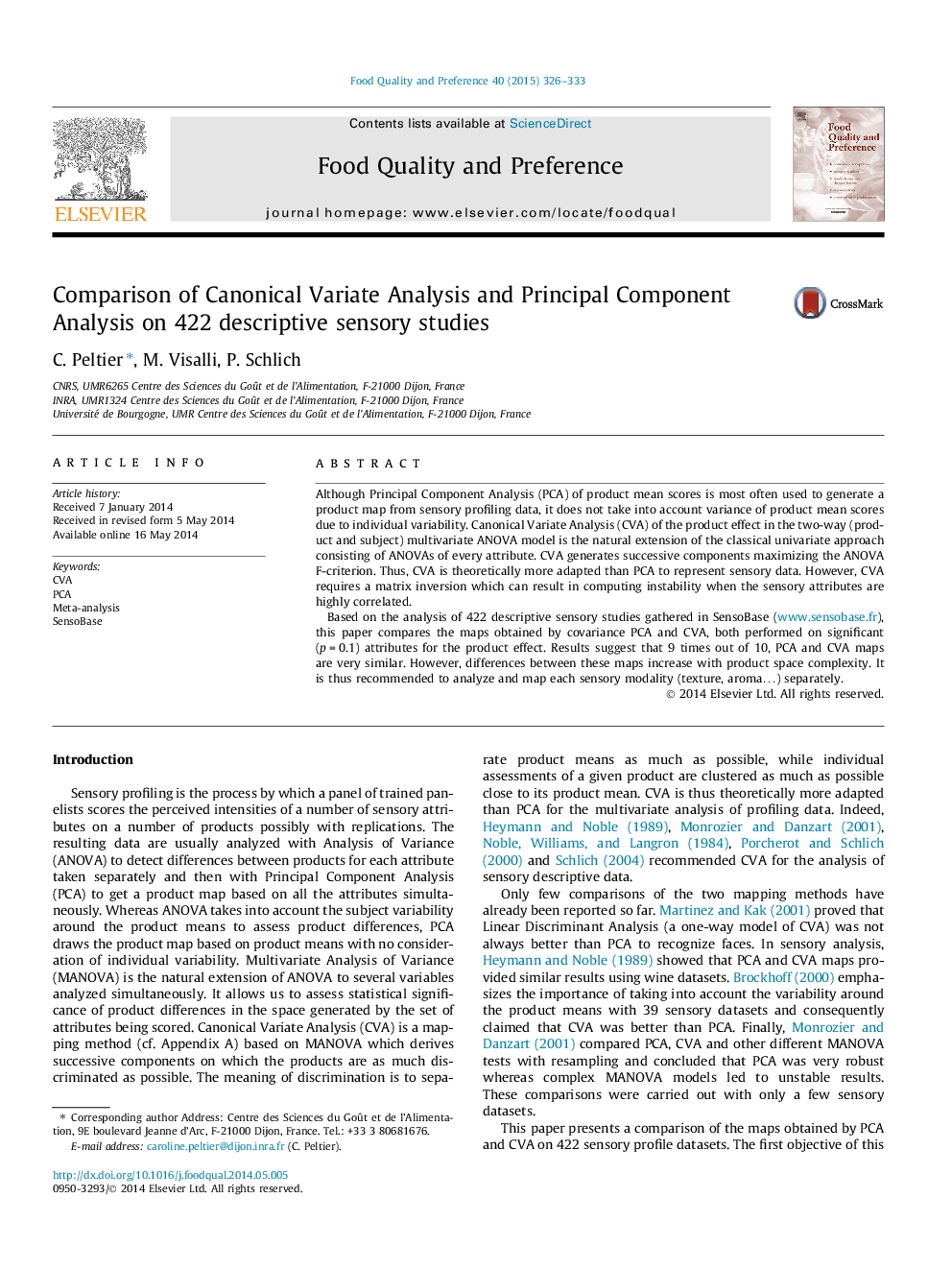| Article ID | Journal | Published Year | Pages | File Type |
|---|---|---|---|---|
| 4317045 | Food Quality and Preference | 2015 | 8 Pages |
•Most of time, covariance PCA of product mean scores gives the same results than CVA.•When different, it is due to high complexity (dimensionality) of the product space.•Analyzing profile data by sensory modality makes PCA and CVA outputs more similar.•422 real sensory studies have been used to establish representative findings.•A method for comparing two mapping techniques of a descriptive dataset is proposed.
Although Principal Component Analysis (PCA) of product mean scores is most often used to generate a product map from sensory profiling data, it does not take into account variance of product mean scores due to individual variability. Canonical Variate Analysis (CVA) of the product effect in the two-way (product and subject) multivariate ANOVA model is the natural extension of the classical univariate approach consisting of ANOVAs of every attribute. CVA generates successive components maximizing the ANOVA F-criterion. Thus, CVA is theoretically more adapted than PCA to represent sensory data. However, CVA requires a matrix inversion which can result in computing instability when the sensory attributes are highly correlated.Based on the analysis of 422 descriptive sensory studies gathered in SensoBase (www.sensobase.fr), this paper compares the maps obtained by covariance PCA and CVA, both performed on significant (p = 0.1) attributes for the product effect. Results suggest that 9 times out of 10, PCA and CVA maps are very similar. However, differences between these maps increase with product space complexity. It is thus recommended to analyze and map each sensory modality (texture, aroma…) separately.
